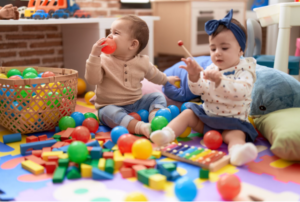
One of the most significant decisions parents make regarding their child’s early education is selecting the right preschool. A good preschool provides a secure environment that enables children to learn, play, and develop important skills for the future. Meanwhile, it must be affordable without quality compromise. There are so many choices to make that sometimes it is difficult to find a preschool that is safe and reasonably priced. These top tips will guide you in making the best choice for your little one.
1. Start Your Search Early
The preschool facilities are usually limited, and it is best to start searching several months before. The earlier you start, the more time you have to do research and to visit other facilities and compare their programs. Write a list of preschools around your neighborhood and visit them to see how they work. Such careful planning will make sure that you will not have to hurry up and make a decision, and make the best choice regarding your child.
2. Check Licensing and Certifications
The first thing when choosing a preschool facility is safety. Never forget to check the facility to see whether it is licensed the relevant state or local authority. Licensing shows that the preschool is subject to the basic standards of health, safety, and staff training. And when the school has been accredited an established agency, like the National Association for the Education of Young Children (NAEYC). It is also a bonus of quality. When we speak of accreditation, it generally implies that the preschool will exceed the minimum standards to offer a superior quality of care and education.
3. Visit and Observe the Environment
Go to the preschool to have a personal preview of the environment before deciding. A good preschool must be clean, well-organized, and child-friendly. Ensure that the play areas are safe, the classes are well-lit and friendly, and that security systems such as fire extinguishers and childproofing exist. Check the interaction of teachers with children. They are to be cozy, caring, and tolerant; they ought to make the kids feel safe and encouraged.
4. Ask About Staff Qualifications and Ratios
The nature of the staff is important in the development of your child. Inquire about the training of teachers in early childhood education, first aid, and emergency treatment. In addition, examine the student-to-teacher ratio. Reduced ratios imply that there is more attention and care available to each child, and this is important in learning and safety. Staffing consistency is also important, as children feel safe when they are taken care of known people.
5. Review the Curriculum and Daily Schedule
It must not only be a good childcare system but one that fosters learning and development as well. Inquire concerning the curriculum and day-to-day routine. Find a balanced schedule that will involve playing, reading, creative activities, and socialization time. An organized timetable consisting of fun and learning activities will get your child ready to attend kindergarten and will keep them occupied and in good spirits.